Scene of Midwest’s Worst Oil Spill – Sleepless Nights and Black Goo
A first-hand report from communities affected by Enbridge pipeline rupture on Kalamazoo River.
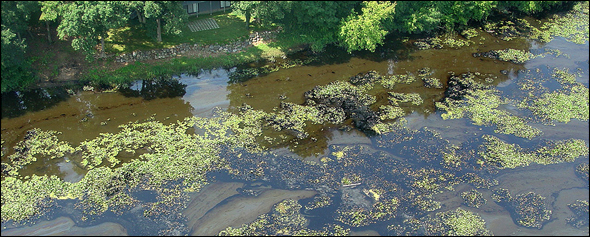
By Sam and Michael LaSusa
Special to Circle of Blue
Michigan’s LaSusa brothers Sam, 17, and Michael, 20, traveled to communities affected by the Enbridge pipeline rupture along the Kalamazoo River in late July. They met with local landowners and clean-up volunteers to find out how people responded to the Midwest’s worst oil spill.
As we neared Marshall, Mich., where the largest oil spill ever in the Midwest occurred late last month, we noticed a cardboard box by the side of the road. Scrawled across it was “Oil Spill Donations Here.” It rested beside a large tent with a mountainous collection of bottled water and a few dozen buckets of Tide. Piles of old towels, rags and linens lay in the parking lot along with a collection of tanks and animal cages. My brother Sam, a photographer, was driving. I told him to pull off the road.
We exited the car into a muggy, early-morning stillness that was broken only by the click of Sam’s camera as he documented the collection of supplies.
I rubbed the sleep from my eyes and looked around as a soft voice came from inside the tent. It was Deb Jenkins, an organizer for the Kalamazoo Wildlife Oil Spill Donation Center. Jenkins’ donation drive is currently Michigan’s only official wildlife aid site for the recent Kalamazoo River oil spill. Many animals that live in the Kalamazoo River and surrounding floodplain have been affected by the leak.
Jenkins took action with her husband Dave after they received a Facebook message about the pipe burst.
“We took our flashlights out and took a look and we were seeing what was going on,” Dave Jenkins said, “We were going to go out and start cleaning the animals ourselves.”
The Jenkins duo recruited some friends, including Matt Davis and John Face, to place more emphasis on wildlife rescue. Their first step was creating a Facebook page. In 12 hours more than 200 people signed up to support their cause.
A Lot of Oil
According to federal authorities, 1 million gallons of oil spilled into Talmadge Creek, a tributary of the Kalamazoo River, from a ruptured pipeline owned by Enbridge Inc., a Canadian energy delivery company that operates world’s longest crude oil and liquids pipeline system. Roughly 1,900 miles of that pipeline comprises the Lakehead system, which includes the line where the rupture occurred. Enbridge claims to have more than 400 employees, contractors and volunteers working on the cleanup. Enbridge President and CEO, Pat Daniel, has promised to do “whatever it takes” to clean up the spill, including fully reimbursing governmental agencies for their efforts. Daniel, who resides in Calgary, Canada, has remained in Michigan since the spill was discovered.
On July 28, the Jenkinses, along with Davis and Face, set up their tent at the Crossroads church. They receive donations at all hours of the day.
“We haven’t slept much since,” Dave said. The Jenkinses and other volunteers spend days cataloging, organizing, boxing and transporting them. Physical donations, such as the towels, soap and water, are taken to a cleaning site about half a mile from the church, while monetary donations are pooled into the Kalamazoo River Environmental Relief Fund.
“[The money] is not going up to the cleaning station, it’s not going to Enbridge,” said Deb Jenkins. “Once the river starts getting cleaner…it’s going to be for new vegetation, new animals…and getting our river back to the way it was.”
Even the Jenkins’ son, Shawn, is volunteering at the wildlife cleaning operation. Roughly 100 animals—including geese, swans, ducks and turtles—have been captured and cleaned as of late July, according to The Battle Creek Enquirer. To reduce the stress put on the animals and increase their chances of survival, access to the cleaning site is restricted. Meanwhile the Michigan Department of Natural Resources and the Environment has five fishery crews on the river searching for fish kills.
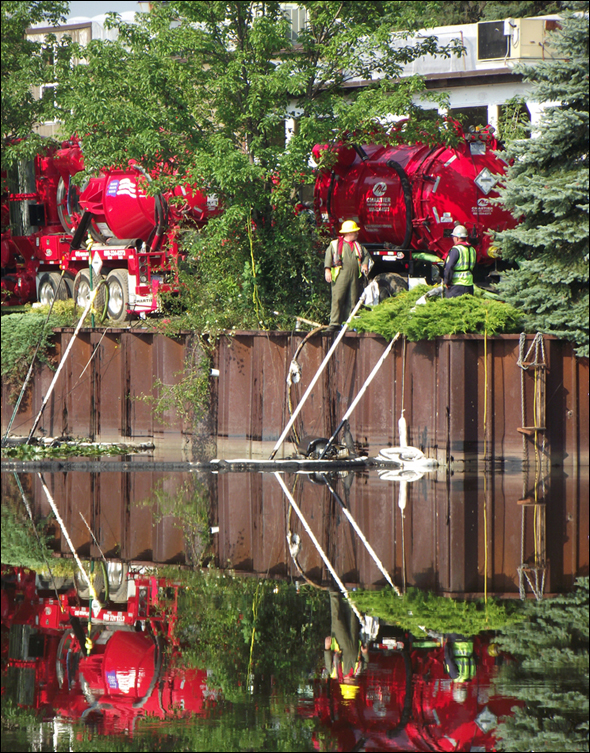
Feds Investigate
The United States Department of Transportation had issued Enbridge a warning letter in January regarding corrosion in Line 6B of their Lakehead system, where the leak occurred. Enbridge submitted evidence in response, and indicated that they were improving how the pipeline was monitored.
Meanwhile the Obama administration had repeatedly warned Enbridge about safety issues along its Lakehead pipeline system, even arranging a meeting earlier this year with company officials regarding a “series of major failures,” the Battle Creek Enquirer, a local paper, reported.
Although Enbridge submitted evidence that they had put steps in place to improve the monitoring of the pipeline’s condition, the letter stated, “The information provided does not demonstrate compliance with the above regulation…Under 49 United States Code § 60122, you are subject to a civil penalty not to exceed $100,000 for each violation for each day the violation persists up to a maximum of $1,000,000 for any related series of violations.” However, the PHMSA “decided not to conduct additional enforcement action or penalty assessment proceedings at this time,” citing “positive steps being taken to improve Enbridge’s internal corrosion mitigation and monitoring program,” which included updates the system that were scheduled for completion within the first half of this year.
Seven investigators from the National Transportation Safety Bureau arrived in the area on July 27 to determine the cause of the accident. On August 2, Peter Knudson, an agency spokesman, presented the most recent findings at a public meeting at Marshall High School.
According to Knudson, in the early evening on July 25 the Enbridge control center in Edmonton reported a planned shutdown of Line 6B of their Lakehead system that was to remain in effect for approximately 10 hours. Early in the morning the following day oil began flowing through the line again, as scheduled. Less than three hours later Enbridge shut down the pipeline and did not bring it back online. Several hours later the Enbridge control center in Edmonton, Alberta received a call from a Consumer’s Energy utility worker who reported spotting oil. Knudson did not elaborate on the location of the sighting nor Enbridge’s reaction or response to this call.
The NTSB interviewed three firemen from Marshall who responded to 911 calls received Sunday evening regarding suspicious odors in the area. A caller driving by the local airport near Talmadge Creek described a gas-like smell permeating the town around 9:30 pm. The fire department responded to the call, but was not able to detect anything with their instruments. Reports that an Enbridge truck had been seen in the area Sunday night have been published in local newspapers, but Knudson backed up Enbridge’s denial of those claims, stating that investigators determined that the truck in question actually belonged to Michigan Gas.
Enbridge stated that they discovered the leak at 9:45 am on July 26. They reported it to the national oil spill response center managed by the Coast Guard less than four hours later. The company says that the gap between their discovery of the leak and their report to the response center was due the need for them to “quantify” the leak before reporting it.
In a July 29 interview with WOOD TV, Rep. Mark Schauer (D-Battle Creek) said: “The pipeline company has been irresponsible from the start. This started Sunday night. They did not…declare it an incident until 9:45 Monday morning. But just as bad, or even worse for the response, they didn’t report it to federal authorities until 1:33 pm…They knew there was a problem Sunday night and didn’t contact federal authorities of a problem until 1:30 the following afternoon.”
Alice Sims, a five-year resident of Marshall and a volunteer at the Kalamazoo Wildlife Oil Spill Donation Center questions the legitimacy of the report.
“The timing of their report is skeptical. Even if they didn’t know about it Sunday [July 25], they knew about it Monday morning. So, why did it take them all day to report it?” Sims said.
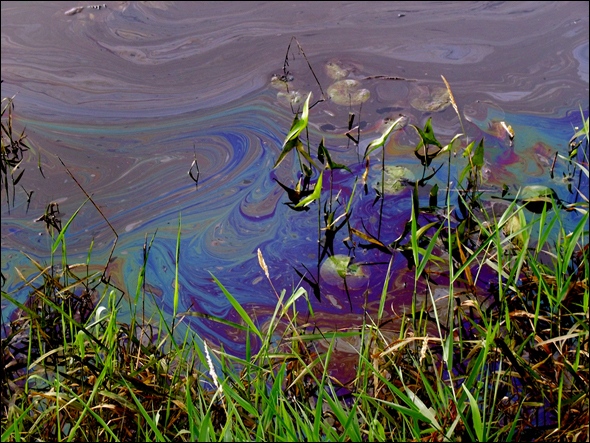
Oil Everywhere
Evidence of the spill is easy to find. We ventured to a dam at Ceresco, which is about eight miles west of the donation site. As we approached the dam, we could smell benzene in the air. As we rounded a corner, we saw a police car parked at the bridge’s entrance. Trucks with vacuum lines were sucking up the remaining “sheen” oil from the water. Officials claim that the oil has been contained to an area between the spill site and Morrow Lake, about 30 miles downstream. But when water levels rise again, any oil that has not been removed will be swept back into the river. Additional back-up booms have been placed downstream from the lake in case extremely heavy rainfall pushes the oil further.
I spoke with a resident whose house is less than 200 ft from the dam. He declined to be quoted or have his name published, but he allowed us to take pictures from his property. Years ago, the resident had cleared a few hundred square feet of dense forest from his back yard in order to be able to see the river from his home. Now a giant pond of dark, oily water sat in his yard while the slick, shiny river ran past it. We had to speak loudly to hear each other over the growling engines of the vacuum trucks on the dam.
The resident mentioned that in the days before the spill, the surrounding area had received heavy rainfall. This resulted in higher water levels on the river. After the water level fell oil lingered on every surface that had been submerged—black goo coated plants, low-hanging tree branches and shoreline soil.
But the owner of the riverside property said that he was not angry with Enbridge.
That was a common sentiment. Despite confusion and skepticism surrounding what Enbridge knew about the leak, and the time it took them to report the information to the proper authorities, many residents said they have been satisfied with the company’s clean-up efforts and the governmental agencies that are assisting them.
According to Mark Durno, the deputy on-site director for the EPA, 91,000 feet of booms have been deployed on the river to capture the “sheen” oil that still remains after vacuum trucks and oil skimmers retrieved and contained most of the original spill. Durno estimates that it might take up to several months to clean up the remaining sheen.
“We’re not going to sugarcoat it,” Durno said during a town meeting at Marshall High School. “That marshy area [around Talmadge Creek, where the spill happened] still looks bad.”
Meanwhile EPA regional director Susan Hedman promised the audience at the Marshall High School meeting that the river would be restored to its pre-spill condition.
Enbridge has offered to purchase more than 200 homes that were for sale before the spill near the 30-mile stretch of river that has been affected by the leak. The company has also paid for some residents to be temporarily relocated, as well as donated bottled water to those uncomfortable drinking tap water.
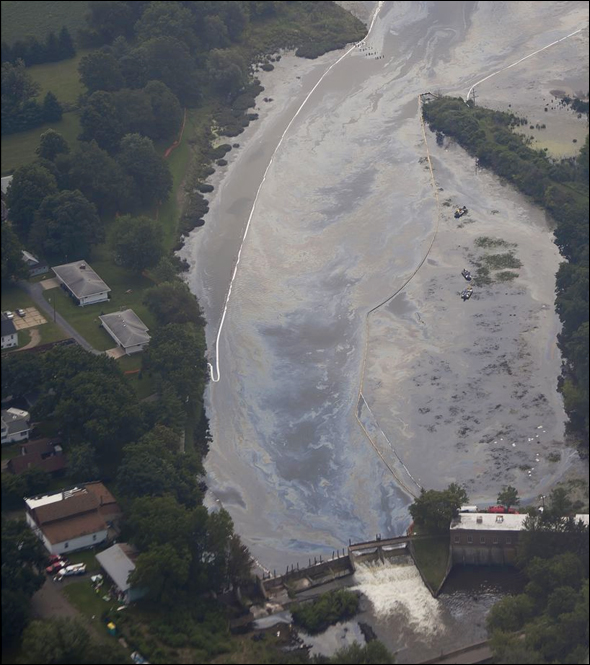
Understanding Community
Although testing has determined that local well water is safe for consumption, use of water from the contaminated portion of the river and from Morrow Lake for drinking, irrigation and recreation has been banned until further notice.
Before returning to Marshall for the EPA update, Sam and I took a trip to Plainwell, in Allegan County, downriver from Morrow Lake where the spill had been stopped. According to Bill Bomar, Plainwell’s Director of Public Safety, the city lies within an EPA “superfund” site—a federal program that cleans up the nation’s uncontrolled hazardous waste sites. Contaminated water being removed from the river consists of polychlorinated biphenyls (PCBs) that were used in the paper mills in the area. Although oil from the spill that reaches the superfund site could complicate both clean up projects, officials say the oil is well-contained.
Sarah Wagenaar, 30, of Kalamazoo was visiting Plainwell the same day as us. Wagenaar said she grew up weary of the river because of PCB contamination and other pollution, “Since we were kids, everybody always told us not to swim or fish or anything in the [Kalamazoo] river,” she said
However, Ceresco residents Jeri Wood and Frankie Payette, who live near the dam, claim that before the spill many locals swam and fished in the river without concern for pollution.
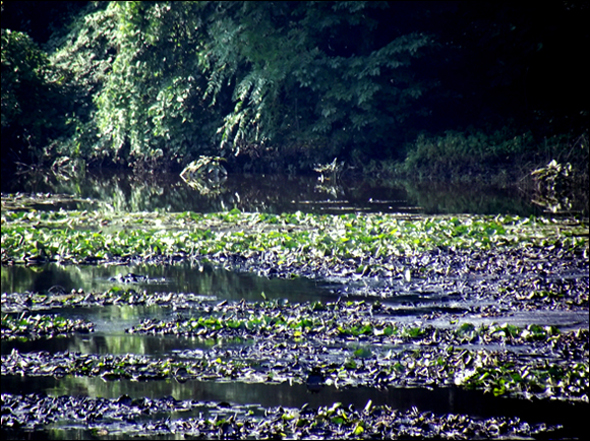
Payette said she called Consumer’s Energy during the evening on July 25 to report a strange smell. And while someone inspected the site that night, Enbridge didn’t take action until the next day, Payette added.
“So far [the clean-up] is pretty good,” said Wood. “I feel bad for the animals, but the whole community just came together. I mean, somebody has got to do it”
The long-term effects of the spill are hard to predict, but the dedicated response from the local community, Enbridge and the EPA has certainly improved the outlook.
As Payette put it, “You just have to pick up and go on.”
Sam LaSusa is a junior at Traverse City’s St. Francis High School. Michael LaSusa, a junior at the University of Miami in Florida, majors in journalism. Reach Michael at mlasusa2000@yahoo.com.

Circle of Blue provides relevant, reliable, and actionable on-the-ground information about the world’s resource crises.

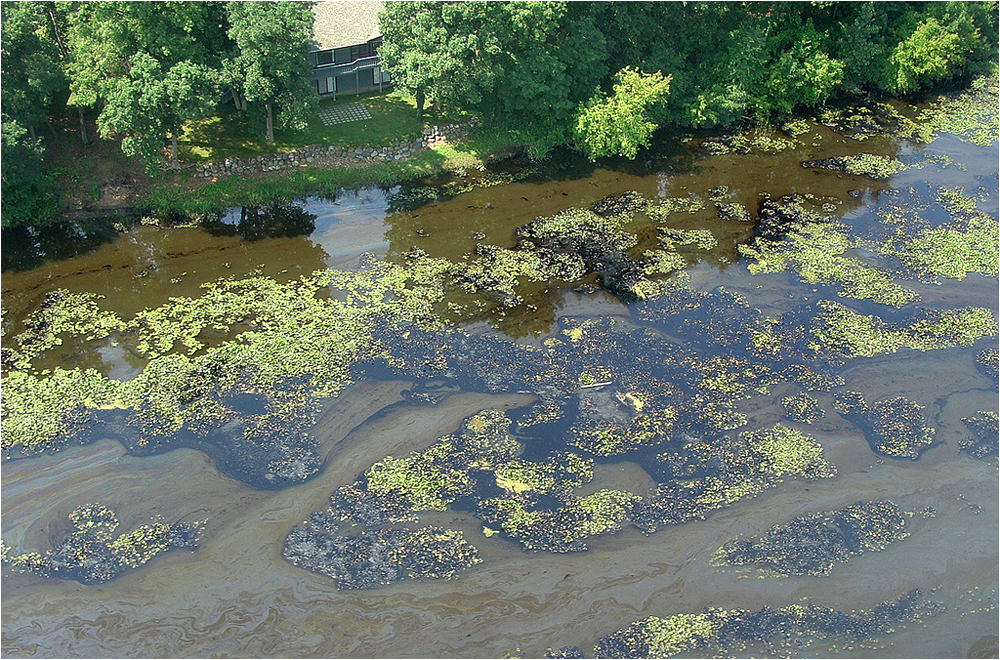
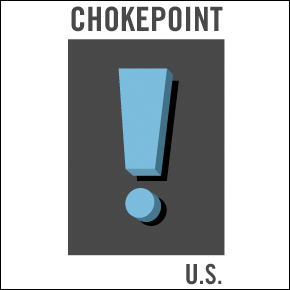

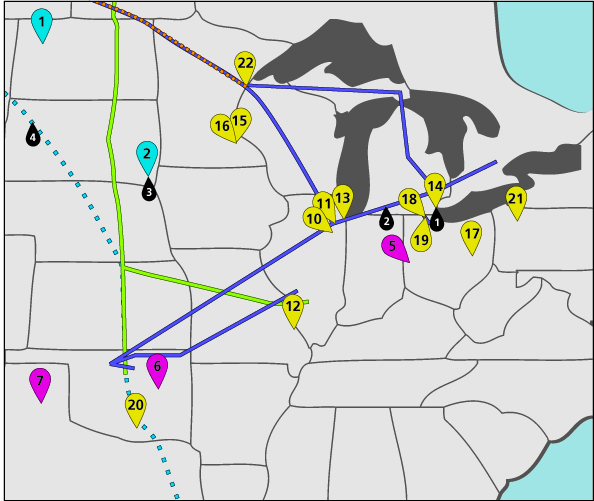



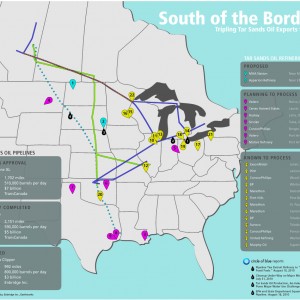

this is bad i think we should stop using oil and turn to alternative energy